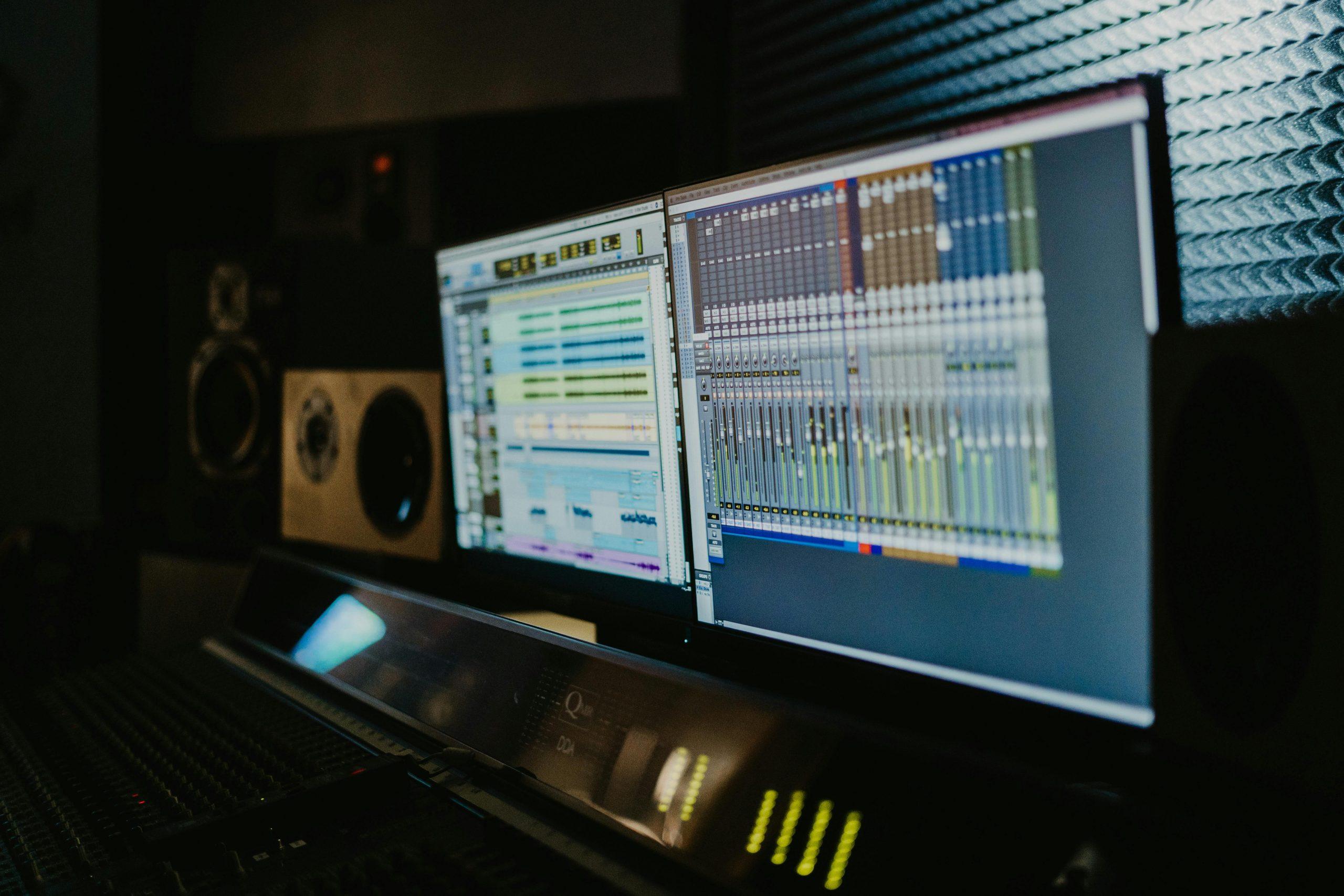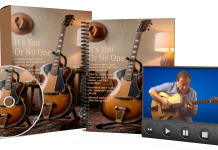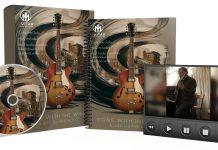This post may contain affiliate links. As an Amazon associate, Google associate as well as associate for other programs, Guitar & Music Institute may earn commissions from qualifying purchases.
 As a guitarist or musician, do you ever have dreams of having your own recording studio? With advancements in technology and the availability of affordable equipment, building a recording studio is no longer limited to professional musicians or celebrities. Whether you want to record your own music, podcast, voiceovers, or even YouTube videos, having a dedicated space for recording makes a world of difference in terms of sound quality and creativity. If you’re just starting out and feeling overwhelmed by the thought of building a recording studio, fear not! In this comprehensive step-by-step guide, we will take you through the process of how to build a recording studio from start to finish. From selecting the right location to choosing the essential equipment, we’ve got you covered. So, let’s dive in and turn your musical dreams into reality!
As a guitarist or musician, do you ever have dreams of having your own recording studio? With advancements in technology and the availability of affordable equipment, building a recording studio is no longer limited to professional musicians or celebrities. Whether you want to record your own music, podcast, voiceovers, or even YouTube videos, having a dedicated space for recording makes a world of difference in terms of sound quality and creativity. If you’re just starting out and feeling overwhelmed by the thought of building a recording studio, fear not! In this comprehensive step-by-step guide, we will take you through the process of how to build a recording studio from start to finish. From selecting the right location to choosing the essential equipment, we’ve got you covered. So, let’s dive in and turn your musical dreams into reality!
Planning Your Recording Studio: Key Considerations and Budgeting
If you’re a musician or a sound engineer looking to build your own recording studio, there are a few key considerations and budgeting tips to keep in mind. Building a recording studio can be an exciting but costly venture, so it’s important to plan carefully before diving in. Here’s what you need to know.
First and foremost, think about the purpose of your studio. Are you planning to record only your own music, or do you intend to offer professional recording services to others? This will determine the size and complexity of your setup. If you’re just starting out or on a tight budget, you may want to begin with a smaller setup and gradually expand as your experience, gear and possibly clientele grows.
Next, think about your physical space. Consider the size of the room and its acoustic properties. You’ll need a space that can accommodate your equipment as well as provide optimal sound quality. Think about noise isolation, soundproofing, and proper ventilation to create a comfortable and functional environment.
Find out about acoustic sound panels: view on Amazon.
When it comes to the budget, it’s important to factor in all the necessary components. This includes equipment like microphones, headphones, monitors, audio interfaces, and software. Additionally, don’t forget about the cost of acoustic treatment, cables, and furniture. It’s wise to prioritize your purchases based on your immediate needs and gradually upgrade or expand as your budget allows.
Find out about the rode NT2-A on: view on Amazon.
In conclusion, planning your recording studio involves careful consideration of your purpose, physical space, and budget. Building a studio can be a long-term investment, so it’s crucial to make informed decisions. Take the time to research and explore different options within your budget to create a recording space that meets your needs and produces high-quality sound.
Essential Equipment for Setting Up Your Home Recording Studio
First and foremost, you’ll need a computer or laptop with sufficient processing power and storage capacity. This will serve as the heart of your recording studio, running the necessary software for recording, editing, and mixing audio. Additionally, invest in a good audio interface which allows you to connect your microphones, instruments, and other audio sources to your computer.
Next, let’s talk microphones. A decent condenser microphone is vital for capturing clean and professional-sounding vocals and acoustic instruments. Depending on your needs, you may also want to consider dynamic microphones for loud sources or specialized microphones for specific instruments.
Acoustic treatment is another crucial aspect of any recording studio. You’ll want to minimize unwanted reflections and reverberations, so investing in sound-absorbing panels, bass traps, and diffusers can greatly improve the clarity and accuracy of your recordings.
Finally, don’t forget about headphones and studio monitors. High-quality headphones allow you to monitor your recordings with precision, while studio monitors provide a more accurate representation of your mixes. Pair these with a good audio interface, and you’ll have a solid foundation for your home recording studio.
Remember, building a recording studio takes time and careful planning. Start with the essentials, gradually upgrade your equipment as your needs grow, and most importantly, have fun exploring the world of audio production. The possibilities are endless, and with dedication, you can create professional-quality recordings right from the comfort of your own home.
Choosing the Right Location for Your Recording Space
Firstly, you’ll want to think about the acoustics of the space. Look for a room that has good natural sound insulation and minimal background noise. Avoid spaces with excessive echoes or reverberation, as these can greatly affect the clarity of your recordings. If possible, consider using soundproofing techniques to further improve the acoustics of your room.
Secondly, take into account the size and layout of the space. It’s essential to have a room that is large enough to accommodate all the necessary equipment and comfortably fit all the people who will be involved in the recording process. Additionally, consider the layout – having a dedicated control room separate from the recording space can help minimize unwanted noises and distractions.
Another important aspect to consider is the location’s proximity to amenities and resources. Is the space easily accessible for you and your clients? Are there nearby parking options? Access to public transportation? Also, consider the availability of electrical outlets, internet connectivity, and other utilities required for your recording setup.
Lastly, think about future expansion and growth. Choose a location that allows for scalability, as your recording needs may change over time. Ensure that the space can accommodate any potential upgrades or additional equipment you may need as your studio evolves.
Selecting the right location for your recording space is crucial to achieving high-quality recordings. Consider the acoustics, size, layout, proximity to amenities, and future growth potential when making your decision. By carefully considering these factors, you’ll be on your way to creating the perfect environment for your recording studio.
Acoustic Treatment: Importance and DIY Tips for Soundproofing
Acoustic treatment is often overlooked when it comes to creating a the ideal audio environment, but it plays a crucial role in soundproofing and achieving optimum sound quality. Whether you’re a musician, podcaster, or simply someone who wants to create a quiet space, understanding the importance of acoustic treatment is essential.
One of the main benefits of proper acoustic treatment is reducing unwanted echoes and reverberations. Excessive reverb can negatively affect the clarity and quality of your recordings. By strategically placing absorptive materials such as foam panels or bass traps, you can minimize these reflections and create a more controlled sound environment.
Another important aspect of acoustic treatment is sound insulation. If you’re aiming to create a soundproof space, it’s crucial to consider both external noise entering the space and internal noise leakage. Installing dense materials like rock wool or mass-loaded vinyl can help prevent sound from entering or escaping, ensuring a quieter environment for recording or enjoying music.
While professional acoustic treatment solutions are available, there are also several cost-effective DIY options to consider. Building your own soundproofing panels using materials like rock wool or fiberglass insulation can be a budget-friendly alternative. Additionally, rearranging furniture and adding curtains or rugs can help absorb and diffuse sound waves, improving the overall acoustic quality of a room.
Understanding the importance of echo reduction and sound insulation can help create a more controlled environment for recording or enjoying music. With the availability of both professional and DIY options, achieving excellent acoustic treatment is within reach for anyone seeking to build a recording studio or improve the sound quality of their space.
Setting Up Your Recording Studio: Placement and Wiring
First and foremost, consider the location of your recording studio within your home. Ideally, you want to choose a room that is away from high-traffic areas and external noise sources. This will help minimize any unwanted background noise that may interfere with your recordings.
When it comes to wiring, make sure to plan ahead and invest in high-quality cables and connectors. This will ensure the integrity of your audio signals and reduce the chances of unwanted interference or signal loss. Proper cable management is also crucial to maintain a tidy and organized space.
Another important aspect to consider is the placement of your recording equipment. For optimal acoustics, it’s recommended to position your speakers or monitors at an equal distance from each other and from your listening position. Experiment with speaker placements to find the sweet spot where you can hear a balanced and accurate representation of your recordings.
Careful consideration is needed with regards the placement of the studio and wiring. By choosing the right location and investing in quality equipment and cables, you can create a space that allows you to capture and produce exceptional audio recordings. Take the time to plan and experiment with different setups to find the optimal configuration that best suits your needs.
Understanding Audio Interfaces and Microphones for Quality Recording
An audio interface is a device that connects your microphones and instruments to your computer, allowing you to record and playback audio. It acts as a bridge between your analog audio signals and the digital world. The quality of your audio interface can greatly impact the overall sound of your recordings, as it determines the conversion of analog signals to digital and vice versa. It’s essential to invest in a high-quality audio interface to ensure clear and pristine recordings.
Choosing the right microphone is equally important for quality recording. Different microphones are designed to capture different types of audio sources, such as vocals, instruments, or ambient sounds. Dynamic microphones are known for their durability and ability to handle high sound pressure levels, making them ideal for live performances or recording loud instruments. On the other hand, condenser microphones are more sensitive and provide a more detailed and accurate sound representation, making them suitable for capturing vocals and acoustic instruments in a controlled studio environment.
Take the time to research and invest in reputable brands and models that suit your budget and requirements, and you’ll be on your way to creating professional-sounding recordings in no time.
Software and DAWs: Selecting the Best Tools for Your Music Production
The world of software and Digital Audio Workstations (DAWs) offers a plethora of options to help you realize your musical ambitions. Choosing the right tools, though, can be a bit overwhelming, considering the vast array of software available.
Check out Cubase Pro DAW: view on Amazon
It’s important to assess your requirements and goals. What kind of music do you want to create? Are you a solo artist or part of a band? Do you plan on recording live instruments or mainly working with digital samples? Understanding your specific needs will help narrow down your choices and make the selection process much simpler.
Once you have a clear idea of what you’re looking for, it’s time to evaluate the features and functionalities of different software and DAWs. Look for tools that provide a user-friendly interface, a wide range of virtual instruments and effects, and robust editing capabilities. Additionally, consider compatibility with your operating system and any hardware or plugins you plan to use. Reading reviews and seeking advice from fellow musicians can also be immensely helpful in making an informed decision.
Building a recording studio is no longer solely about acquiring expensive hardware; software and DAWs play a crucial role in the music production process. By selecting the right tools that align with your needs and goals, you can create and record music that is a true reflection of your artistic vision.
Mixing and Mastering: Tips for Polishing Your Recorded Tracks
Mixing and mastering are crucial steps in the music production process that can make or break the final sound of your recorded tracks. Once you’ve set up your recording studio, it’s time to focus on the mixing process. Start by organizing your recorded tracks, separating them into individual elements such as drums, guitars, vocals, and so on. Adjust the levels of each track to ensure a balanced mix, allowing every instrument to be heard clearly. Utilize EQ to enhance certain frequencies and remove any unwanted ones, making space for each instrument to shine.
After achieving a well-balanced mix, it’s time to move on to mastering. This process involves applying the final touches to your tracks, enhancing their overall volume, clarity, and cohesiveness. Use compression to control the dynamics and ensure a consistent volume across the entire song.
Experiment with different EQ settings to add warmth and presence. Also, don’t forget to critically listen to your tracks on various audio systems, such as headphones, car speakers, and studio monitors, to make sure they translate well on different platforms.
Mixing and mastering play a crucial role in the final sound quality of your recorded tracks. By investing in the right equipment and creating an acoustically treated space, you can set yourself up for success. Remember to organize your tracks during the mixing process, adjusting levels and using EQ for a balanced mix.
During mastering, focus on enhancing the overall volume and clarity of your tracks while ensuring they sound great on different audio systems. By following these tips, you can polish your recorded tracks and make them stand out in the competitive world of music production.
Creating a Productive Workflow in Your Recording Studio
The first step in building a productive workflow is organizing your physical space. Arrange your equipment and instruments in a way that allows for easy access and flow. Consider the placement of your recording console, microphones, and computer setup. Having a clean and clutter-free environment not only helps with productivity but also enhances creativity.
Next, establish a system for organizing and naming your files and projects. This may seem like a small detail, but it can make a huge difference in your workflow. Develop a standardized naming convention that is logical and easy to understand. This will save you time and frustration when searching for specific files later on.
In addition to physical and organizational aspects, it’s important to foster a positive and collaborative atmosphere in your recording studio. Establish clear communication with any musicians, producers, or engineers you work with and encourage open and honest feedback. This creates a supportive environment where everybody feels comfortable contributing their ideas and opinions.
Building a recording studio is just the beginning. Creating a productive workflow takes time and effort, but the benefits are worth it. With an organized space, efficient file management, and a positive atmosphere, you’ll find yourself enjoying a more productive and creative recording process.
Troubleshooting Common Issues in Your Home Recording Setup
- One of the first challenges you might face is acoustics. Poor room acoustics can result in unwanted reflections and resonance, negatively impacting the quality of your recordings. To address this, remember what we covered earlier and consider adding acoustic treatment such as foam panels or diffusers to minimize reflections and create a more controlled recording environment. Additionally, positioning your speakers and monitor placement is crucial to maintaining an accurate listening experience.
- Another hurdle to overcome is electrical noise and interference. This can manifest as a buzzing or humming sound in your recordings. To prevent this, make sure your audio cables are properly shielded and separate them from any power or electrical cables. It’s also wise to invest in high-quality power conditioners or surge protectors to filter out any electrical noise that could affect your recordings.
- Lastly, software and hardware compatibility issues can often plague a home recording setup. Ensure that your operating system, recording software, and audio interface are all compatible and running the latest updates. Additionally, double-check your audio settings within your recording software to ensure they match your hardware setup. If problems persist, reaching out to online forums or contacting customer support for assistance can be beneficial.
This post may contain affiliate links. As an Amazon associate, Google associate as well as associate for other programs, Guitar & Music Institute may earn commissions from qualifying purchases.

























![4 Best Audio Interfaces for Recording Guitars [2024 UPDATED] la3w](https://www.guitarandmusicinstitute.com/wp-content/uploads/2024/02/la3w-100x70.jpg)
